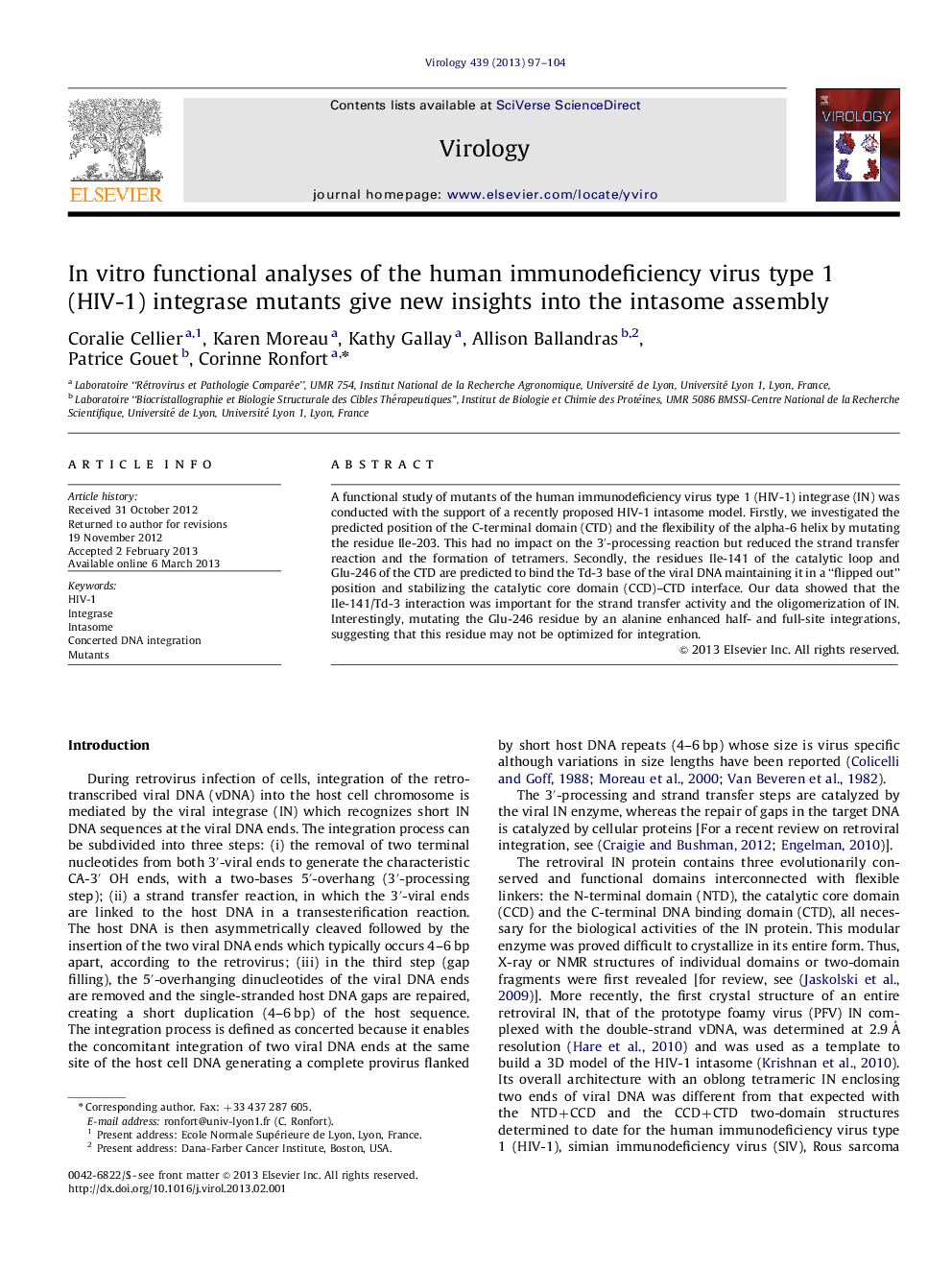| Article ID | Journal | Published Year | Pages | File Type |
|---|---|---|---|---|
| 3424156 | Virology | 2013 | 8 Pages |
A functional study of mutants of the human immunodeficiency virus type 1 (HIV-1) integrase (IN) was conducted with the support of a recently proposed HIV-1 intasome model. Firstly, we investigated the predicted position of the C-terminal domain (CTD) and the flexibility of the alpha-6 helix by mutating the residue Ile-203. This had no impact on the 3′-processing reaction but reduced the strand transfer reaction and the formation of tetramers. Secondly, the residues Ile-141 of the catalytic loop and Glu-246 of the CTD are predicted to bind the Td-3 base of the viral DNA maintaining it in a “flipped out” position and stabilizing the catalytic core domain (CCD)–CTD interface. Our data showed that the Ile-141/Td-3 interaction was important for the strand transfer activity and the oligomerization of IN. Interestingly, mutating the Glu-246 residue by an alanine enhanced half- and full-site integrations, suggesting that this residue may not be optimized for integration.
► We analyzed integration activities and oligomerization of HIV‐1 integrase mutants. ► Our analysis was based on the HIV‐1 intasome model of Krishnan et al. (2010). ► With the Ile-203 mutants, we tested the flexibility of the α6 helix and the CTD position. ► We tested the effect of disrupting the Ile-141/Td-3 viral base interaction. ► We tested the effect of disrupting the Glu-246/Td-3 viral base interaction.
